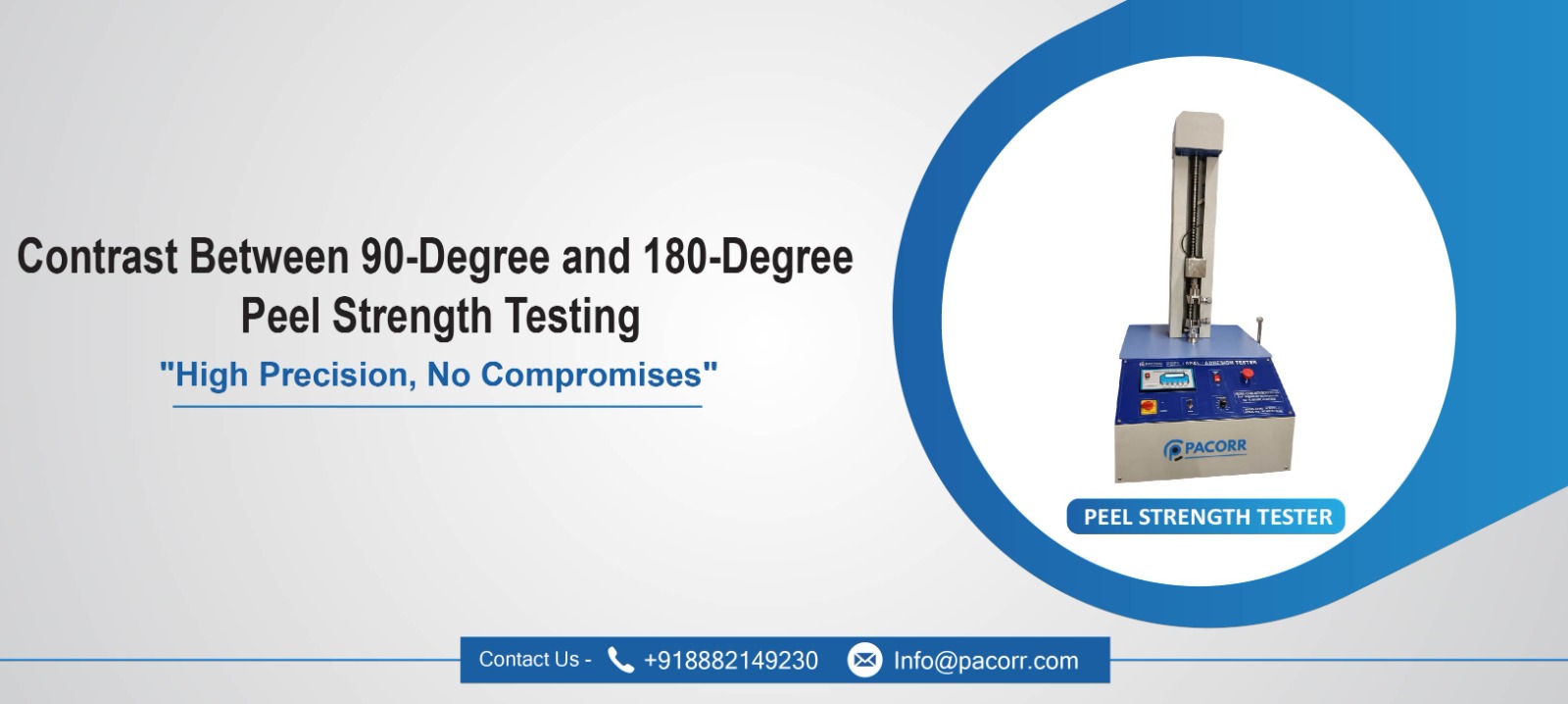
 Adhesion plays a crucial role in various industries, determining the durability and reliability of bonded materials. Peel strength testing is a fundamental method used to assess the force required to separate two adhered surfaces. Among the different techniques, the 90-degree and 180-degree peel strength tests are prominent methods that offer distinct approaches in evaluating adhesive performance.
Adhesion plays a crucial role in various industries, determining the durability and reliability of bonded materials. Peel strength testing is a fundamental method used to assess the force required to separate two adhered surfaces. Among the different techniques, the 90-degree and 180-degree peel strength tests are prominent methods that offer distinct approaches in evaluating adhesive performance.
The Basics of Peel Strength Testing
Peel strength testing measures the force required to peel or separate an adhesive material from a substrate at a specific angle and speed. It's an essential parameter in determining the quality and effectiveness of adhesives across different applications, including automotive, aerospace, packaging, and medical industries.
90-Degree Peel Strength Testing
In the 90-degree peel test, the specimen is pulled at a right angle to the adhered surface. This method simulates a perpendicular force that aims to initiate separation between the adhesive and the substrate. It evaluates the adhesive's resistance to cohesive failure within itself or at the interface with the substrate.
This test configuration is commonly used when the application involves hanging or suspending materials perpendicular to a surface, such as wall posters or tape used for mounting. It assesses the adhesive's ability to withstand perpendicular stresses, providing insights into its performance in scenarios where materials are lifted or pulled away horizontally from a surface.
180-Degree Peel Strength Testing
In contrast, the 180-degree peel test involves pulling the specimen backward at an angle of 180 degrees, parallel to the adhered surface. This method assesses the adhesive's resistance to tensile and shear stresses, examining the bond strength across a broader contact area.
The 180-degree peel test is often applied in industries where materials are wrapped around surfaces or when examining the sealing capabilities of tapes and films. This test configuration mimics scenarios where materials are gradually peeled off, like removing protective films from electronic screens or packaging.
Key Differences
Angle of Application: The primary difference lies in the angle at which the force is applied. The 90-degree test applies force perpendicular to the surface, while the 180-degree test applies force parallel to the surface.
Stress Distribution: The 90-degree test predominantly assesses the adhesive's cohesive strength, focusing on its ability to maintain integrity when pulled away perpendicularly. Conversely, the 180-degree test evaluates both cohesive and adhesive strengths, assessing the material's performance when subjected to tensile and shear stresses.
Application Relevance: Industries choose between the two tests based on their specific application requirements. Materials designed for different end uses may perform better under one test compared to the other, highlighting the need for tailored testing methodologies.
Both the 90-degree and 180-degree peel strength tests are invaluable in evaluating adhesive performance. Their distinct approaches offer valuable insights into different aspects of an adhesive's strength and behavior, enabling manufacturers to optimize materials for diverse applications. Understanding the nuances between these test methods empowers industries to select the most relevant assessment technique for their particular needs, ensuring enhanced product quality and reliability. This knowledge can also help to identify potential weaknesses in an adhesive's formulation, allowing for proactive modifications to improve overall performance. Furthermore, it can help to reduce costs associated with testing, as fewer tests are required to obtain the desired data.
Thanks to Pacorr Testing instruments, we have all the required quality testing instruments that have helped us to ensure the best quality delivered to our clients.

Danish
Fair Exports Pvt. Ltd.

